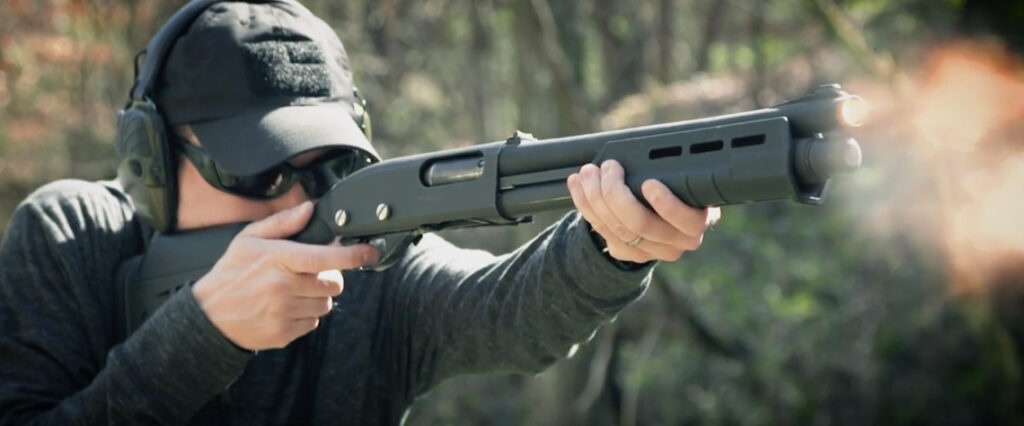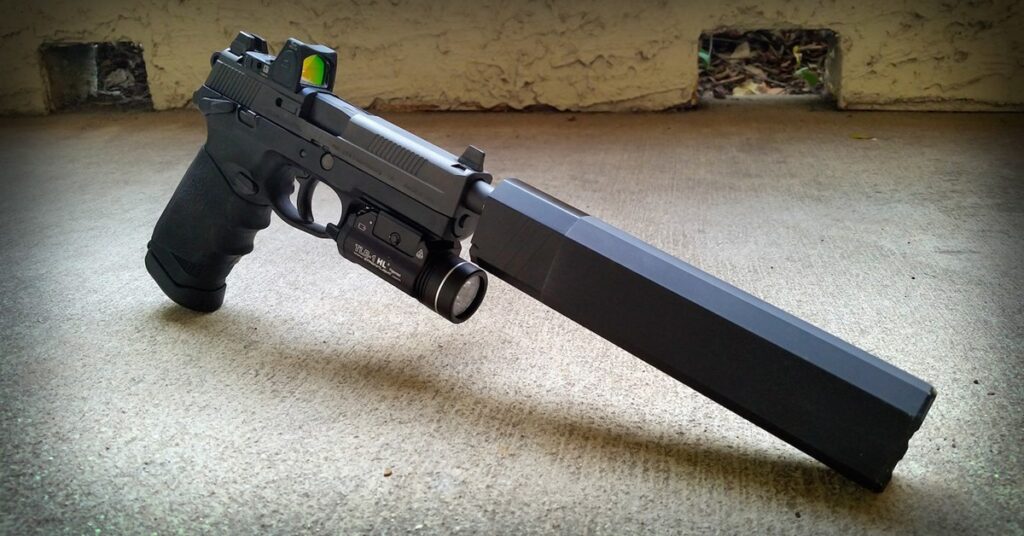As is usually the case, most people learn about firearms from television – movies, TV series or computer games. Again – as is usually the case, in order to increase the flasiness of scenes, reality is often colored, bent, and sometimes completely ignored. And we’re not talking about movies from science-fiction or fantasy genres.
So we think that it would be worth correcting these facts and referring to the most common myths about firearms, their operation and use. We have collected the stupidest things presented on the screen or in games and we will tell you what the truth is.
Pistols are easier to fire
Well not true, it is quite the opposite. The so-called handguns, i.e. pistols and revolvers, are much more difficult to use than the long one – i.e. equipped with a shoulder stock.
There are many more factors to the correct shot from a pistol than a shot from a long gun. In addition to the correct alignment of the sights with each other and with the target, pressing the trigger correctly plays an extremely important role. The way we hold the gun and stand with it is also very important. Even breathing may also play a role.

Pistols have a short sight radius, i.e. the distance between the front sight and the rear sight – so their alignment will always be less precise. The iron sights themselves are bulkier, so it is more difficult to place them on the target precisely. If we press the trigger too fast / hard, the front sight will dive and the shot will move down. If we do not apply force on the trigger straight back, the shot will be carried to the side. If we don’t hold the gun properly, it will try to jump out of our hands and it will not be possible to fire the next shot in short succession. If we shoot quickly without the correct posture, we will lose our balance.
Long weapons, however, especially powered by pistol and intermediate cartridges, have a stock that drastically improves stabilization, a long sight radius with more precise front and rear sights, and often even an optoelectronic sight. In addition, it is heavier, but not too heavy, so the recoil is usually much easier to control. So, easier to aim and to control recoil. You can shoot it easier, faster and more accurately. But it cannot be hidden in your pants. Something for something – but for a shooting range, recreationally – we definitely recommend long guns.
The weapon will knock me over / jump out of my hands
Well no it won’t. There are very few guns that are capable of this. Virtually anyone can fire virtually any weapon. Just listen and follow the instructor’s tips. Weapon manufacturers are doing their best to make the models from their offer as easy as possible to shoot accurately and quickly. Of course, you have to keep your ego in check, but generally with the right technique, everything has to be done.

The recoil of a weapon is never strong enough to knock it out of your hands or to throw the shooter against a wall. The previously mentioned grip and stance are necessary for proper shooting. Regardless of the model, hold the pistol or rifle firmly, but not with all your strength – it will make aiming difficult. It is also important to position your hands properly and press the stock against your shoulder. You can rest your cheek on the stock for additional stabilization – nothing will hurt you.
Another important thing is posture – it has to be stable, with your feet shoulder-width apart, and for a right-hander, right foot slightly to the back.. The weight of the body must be shifted forward by throwing the hips back and the torso forward. Following these rules will allow you to shoot from any model, even for people of small posture.
The silencer makes the weapon almost noiseless
Firearms silencers do reduce the sound of a gunshot a lot. However, almost silent pistols or sniper rifles pictured by Hollywood are completely false. The sound of the shot is made up of two saparate sounds. The first one is the sound of the powder in the casing being burned, pushing the bullet trough the barrel and coming out trough the muzzle device. The second, almost as loud, occurs the moment the bullet crosses the sound barrier.

The silencer helps to reduce only the former. Most of the time, this is a change of about 30 decibels – from about 170 – to about 140. The latter value is the so-called pain threshold, i.e. the loudness limit that causes severe ear pain and permanent loss of the small part of hearing ability. Regular shooting without hearing protectors – even with a silencer – can lead to significant and irreversible damage to this organ.
Putting a silencer on the barrel allows you to eliminate the muzzle flash and reduce the sound of the gunpowder burning, which makes it difficult to locate the shooter’s position, as well as allows for safer shooting in tight quarters, especially in a team when you do not want to stun your colleagues. The shot itself, however, is still loud and audible even from several hundred meters.
A solution that allows the elimination of the second mentioned sound is the use of so-called subsonic ammunition, i.e. one that does not accelerate the projectile above the sound barrier. Then you can shoot without hearing protection and the shot is not heard from more than about 100 meters. Still, the loud crack of the automatic firearm in preparation for the next shot is clearly audible.
The latter is not found in repeating and single-shot weapons (the ones that do not reload themselves). Only a loud “clap” can be heard. The downside of this solution, however, is the havily reduced energy of the projectile and the highly parabolic flight path. Both of these things significantly limit the practical use and ease of use of the weapon in this configuration. Either way, there is currently no way to almost completely eliminate the sound of the gunshot in cinematic fashion.
***


